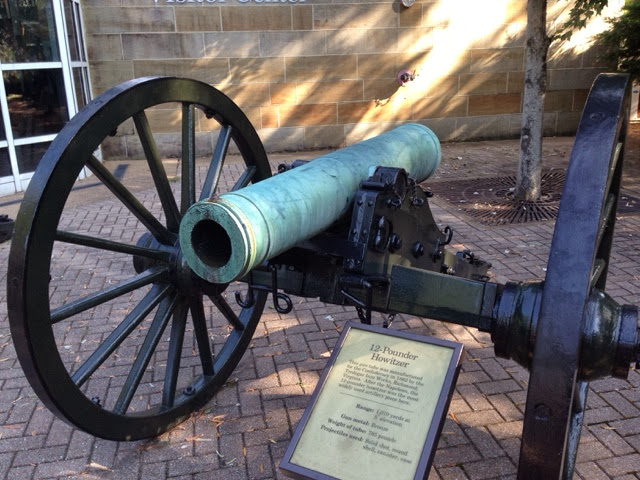The best place to view Civil War artillery pieces is at our national military parks. Cannon in private collections are few and far between. Cannon at national military parks are readily found dotting the battlefields on the ground where artillery units served.
Up close, it is easy to distinguish the differences between field pieces. There are smoothbore guns made of bronze, iron barreled rifles, rifles bearing a reinforcing band in the breach (Parrott rifles), squat mortars, large siege guns and rifles and coastal artillery of all sorts. As securing ownership of an original field piece is incredibly difficult given the relative scarcity, not to mention quite expensive, we are fortunate that these artillery pieces are in our national parks for the public benefit.
CS Battery site, Lookout Mountain, Tennessee
Union battery site, South Loop, Vicksburg National Military Park, Mississippi.
I recently traveled to Chattanooga, Tennessee with a good friend to commemorate the 150th anniversary of the Battle of Chickamauga. In front of the Visitors' Center, I found an array of field pieces including a short barreled howitzer. Obsolete by the time of its manufacture, this 12 pound smoothbore gun (based upon the weight of its ammunition) was poured at Richmond, Virginia's Tredegar Iron Works in 1862.
Founded in 1837, Tredegar rose to become a large metal goods manufacturing center by 1860. During the war, Tredgar manufactured metal goods ranging from artillery tubes to ironclad warship armour for the Confederacy.
The foundry's wartime director, Joseph Reid Anderson, acquired the facility in 1854. The mark of his company, Joseph Reid Anderson & Co., is found on the trunnions of Tredegar tubes as "J.R.A. & Co." Such mark is found on the Chickamauga howitzer - if only my picture had turned out!
As opposed to long tube rifles that soon projectiles on a flat trajectory towards a target, howitzers are short barreled, smoothbore guns that lob projectiles high into the air. They are effective weapons for sending shells (artillery rounds that explode above the target and scattering shrapnel) high into the air and grape or canister (shotgun shells for artillery that pour metal balls or scrap metal into the enemies ranks) into massed infantry and cavalry. Howitzers and other smoothbore were well suited for battlefields such as Chickamauga which are marked by wooded terrain separating open fields.
There were other southern foundry's manufacturing cannon during the war. Cannon are found at national parks marked to manufacturers from cities such as Memphis, New Orleans and Atlanta. I have even seen an artillery piece at Five Forks, Virginia, marked to a foundry in Vicksburg, Mississippi. While northern made cannon existing today greatly outnumber the southern made counterparts, I applaud the National Park Service for placing Confederate guns and rifles at places where Confederate batteries were in action. The dedication to historical accuracy is impressive.
What of Tredegar Iron Works? Richmond suffered during the late war years and the once third largest American metal foundry suffered damage as well. Its remains, however, preserved as a historic site which offers a glimpse into 19th century technology and wartime manufacturing.




















